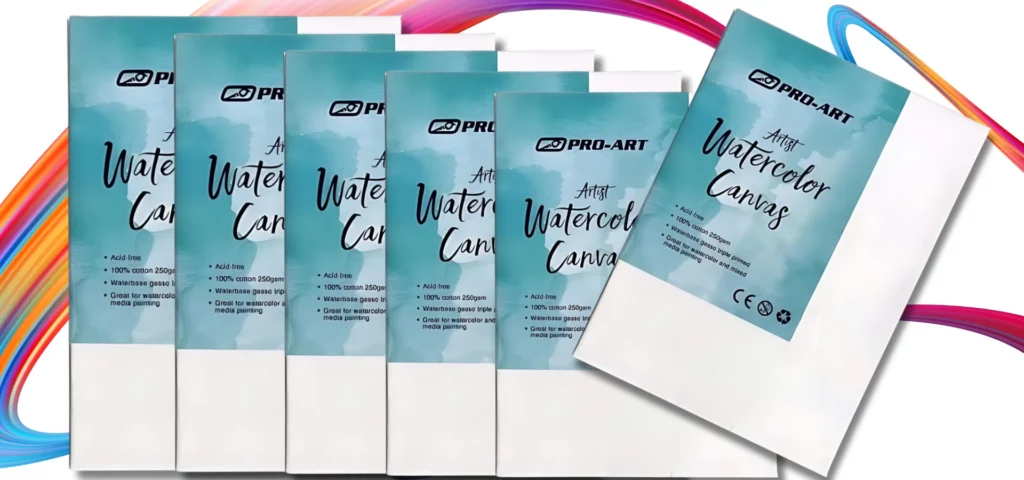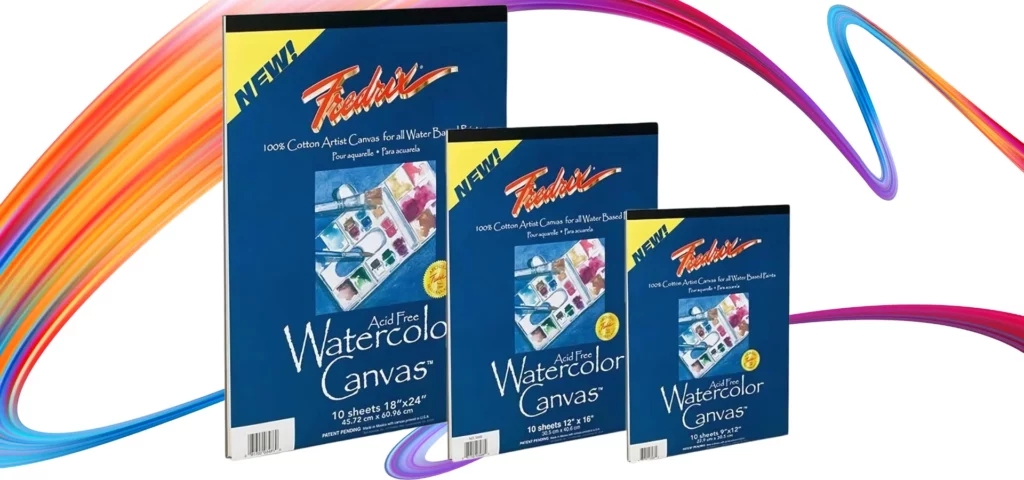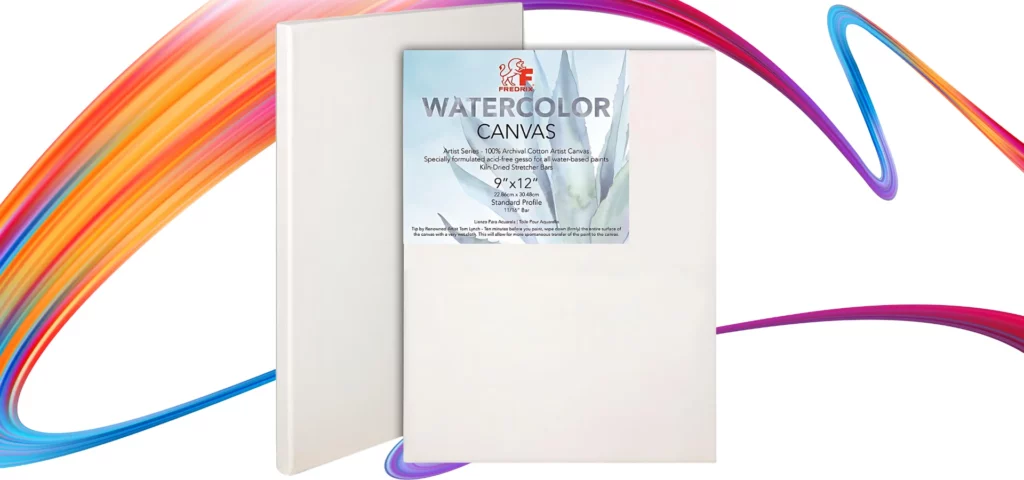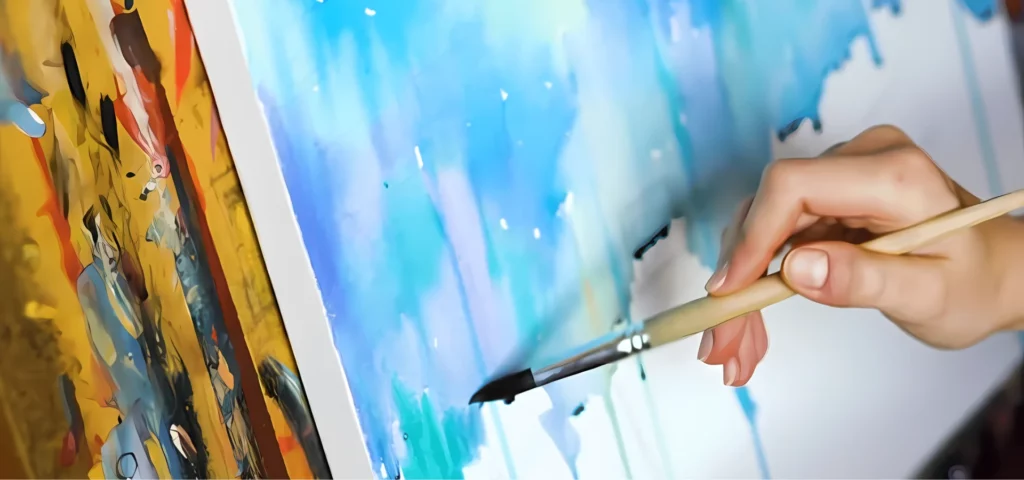Exploring Watercolour Canvas
Introduction to Watercolour Canvas
Watercolour canvas is a cheeky twist on the traditional canvas we all know and love. Instead of relying on paper for those luscious washes, artists now have an alternative medium that allows for more flexibility and durability. The concept is simple: take the iconic texture of canvas, make it suitable for watercolour, and voilà—a canvas that laughs in the face of conventionality!
Benefits of Using Watercolour Canvas
Choosing the right canvas for watercolour painting can be rather like selecting the perfect tea blend – it’s essential for the flavour and experience. Let’s dive into the marvellous benefits of watercolour canvas boards, including their resilience, lifting ability, and framing options.
Resilience and Durability
One of the significant boons of a watercolour canvas is its robustness. Unlike traditional watercolour paper, watercolour canvas doesn’t buckle, tear, or curl up when the surface is wet. This resilience allows artists to scratch, scrape, and re-wet the canvas without damaging it. Let’s be honest, it’s tough to create masterpieces when your canvas resembles something the dog chewed up.
| Property | Watercolour Canvas | Watercolour Paper |
|---|---|---|
| Tear Resistance | High | Low |
| Buckling | Minimal | Medium to High |
| Durability | High | Medium |
Lifting Ability and Manipulation
Picture this: you’re painting a majestic landscape and suddenly decide those cows don’t belong there. Watercolour canvas offers superior lifting ability, allowing artists to easily lift paint off the canvas or wash it off to start anew (Fredrix Artist Canvas). This ability provides more flexibility and fewer restrictions during the painting process, enabling artists to take creative detours with ease. Basically, it’s like having an undo button for your art.
For artists teetering on the edge of innovation, watercolour canvas brings a host of benefits:
- Durability: Unlike paper that can buckle under pressure (literally), watercolour canvas stands firm.
- Versatility: Whether it’s Gouache, Acrylic, Tempera, Aquarelle Pencils, or Pastels, watercolour canvas can handle it all (Pro Art Watercolour Canvas).
- Erasability: Paint doesn’t soak in as quickly, meaning mistakes are forgiven with just a swipe.
- Longevity: Many watercolour canvases, like those from Pro Art, are acid-free, ensuring your masterpiece outlasts all your fleeting whims.
Watercolour Canvas vs. Traditional Paper
When it comes to the epic battle between watercolour canvas and traditional paper, each has its strengths. Let’s break it down:
| Feature | Watercolour Canvas | Traditional Paper |
|---|---|---|
| Durability | High | Medium |
| Water Absorption | Moderate | High |
| Texture Options | Limited | Varied |
| Erasability | Easier | Harder |
Watercolour canvas offers a firmer surface that can stand up to more rigorous techniques, making it ideal for those moments when you feel like channelling your inner Picasso. On the flip side, traditional paper, especially those in the Strathmore 500 Series, provides a range of textures and weights that can meet the strictest archival standards, perfect for projects where permanence is key.
So, whether you choose a watercolour canvas or a pad of acid-free paper, the choice all boils down to what tickles your creative fancy. And hey, why not mix and match? After all, rules are meant to be broken in the wonderful world of art.
Considerations When Choosing Watercolour Canvas
Choosing a watercolour canvas requires a bit more finesse than just grabbing the first one you see on the shelf. Creative artists know that the right canvas can make all the difference in their masterpieces.
Material and Texture
Let’s start with the basics: what your canvas is made of and how it feels. The material and texture of a watercolour canvas play a crucial role in how your paint behaves. Traditional watercolour papers, like those from the Strathmore 500 Series line, are often made of 100% cotton and are acid-free, making them ideal for permanence and archival qualities (Strathmore Artist).
However, not all canvases are created equal. The texture of the canvas impacts how the paint is absorbed and how it looks once dry. A rough texture can be perfect for adding some dramatic flair, while a smoother texture offers more control and precision.
Absorbency and Durability
Then, there’s the matter of absorbency. Unlike traditional paper, watercolour canvas pads tend not to soak up the paint as quickly or as deeply. This means your paint stays wet longer, giving you more time to work your magic, and easier lift-off for corrections or alterations.
The durability of watercolour canvas pads is another big plus. They are less likely to tear or rip compared to regular watercolour paper and won’t curl up when wet, making them easier to display.
Canvas Durability Comparison
| Type | Durability | Absorbency |
|---|---|---|
| Watercolour Canvas Pad | High | Moderate |
| Traditional Watercolour Paper | Moderate | High |
Sizing and Formats
Finally, let’s talk size because, as they say, size matters. Watercolour canvas pads come in every dimension imaginable, accommodating any project you’re working on. The Fredrix Watercolour Canvases, for example, offer a range of sizes including 9″ x 12″, 12″ x 16″, and even up to 24″ x 36″ (My Art Shop).
Usage Tips for Watercolour Canvas
Mastering the use of watercolour canvas pads can elevate your artistic creations. Below are some witty yet practical tips for prepping, painting, and preserving your watercolour masterpieces.
Prepping the Canvas
Unlike traditional watercolour paper, prepping your watercolour canvas is crucial for a prime painting experience. Start by checking if the canvas is primed. Most high-quality options, like the Fredrix Watercolour Canvas Pads, come double-primed with acid-free absorbent grounds (My Art Shop). This not only makes the canvas a receptive surface for watercolours but also enhances the vibrancy and subtlety of the paint.
Priming a canvas is akin to giving it a pep talk before the paint touches the surface. It prepares the canvas, allowing for better paint adherence, which contributes to the longevity of the artwork (My Art Shop). The surface texture of the canvas plays a crucial role in the painting process. A well-primed, smooth surface can provide fluid brush strokes and allows the painter to express fine details effortlessly. Conversely, a more textured canvas can lend itself to a rugged, dynamic aesthetic.
The priming process involves:
- Applying a specially formulated gesso.
- Ensuring an acid-free base.
- Enhancing absorbency for water-based paints.
For a flawless painting session, lightly mist the canvas with water to open up the fibres, ensuring better paint absorption. Stretching the canvas slightly can also help, similar to preparing a stretched watercolour canvas.
Painting Techniques on Watercolour Canvas
Painting on watercolour canvas differs from traditional paper, offering unique possibilities:
- Layering – Because the paint stays wet longer and doesn’t soak in as quickly, it’s easier to manipulate layers.
- Lifting Off Paint – Forgot to include your subject’s missing ear in the background scene you’ve meticulously crafted? Not to worry! It’s easy to lift off the paint and start afresh.
- Texture Plays – The natural woven fabric texture of canvases like Fredrix adds depth and drama to your artwork (My Art Shop).
Experiment with different brush strokes, from broad washes to fine details.
Compatibility with Mediums
While watercolour is the obvious choice, these canvases also boast versatility with other mediums. Due to their professional-grade surface and natural woven texture, watercolour canvas can support acrylics, inks, and even drawing techniques (My Art Shop).
Compatibility table for various art mediums:
| Medium | Compatibility |
|---|---|
| Watercolour | High |
| Acrylic | High |
| Inks | Moderate to High |
| Drawing (Charcoal or Pencil) | Moderate |
This flexibility allows for mixed media approaches, giving artists a broader palette to express their creativity.
Choosing the best watercolour canvas involves understanding your artistic needs and the canvas’ attributes. By considering materials, sizes, and medium compatibility, you can find the ideal canvas to enhance your artwork.
Types of Watercolour Canvas
When it comes to finding the ideal watercolour canvas board, the market offers several noteworthy options that cater to different artistic needs.
Pro Art Watercolour Canvas

The Pro Art Watercolour Canvas is a top choice among artists. Made of 100% cotton, it offers exceptional water absorption, providing flawless diffusion effects in your artwork. This canvas can be used with various water-soluble media like gouache, acrylic, tempera, aquarelle pencils, and pastels. Additionally, these canvases are acid-free, ensuring longevity of the artwork, with a weight of 250gsm and a thickness of 3/4″ (1.8cm) (My Art Shop).
| Brand | Material | Weight | Thickness | Media Compatibility | Acid-Free |
|---|---|---|---|---|---|
| Pro Art | 100% Cotton | 250gsm | 3/4″ | Gouache, Acrylic, Tempera, Aquarelle Pencils, Pastels | Yes |
The Pro Art Watercolour Canvas is a must-have for enthusiasts. Made of 100% cotton, it offers exceptional water absorption for those flawless diffusion effects in your artwork. It can be used with a variety of water-soluble media like gouache, acrylic, tempera, aquarelle pencils, and pastels. These canvases are also acid-free, ensuring your masterpiece remains glorious for years. Additionally, it sports a weight of 250gsm and a thickness of 3/4″ (1.8 cm) (My Art Shop). Here, we compiled its specifics for a quick glance:
| Feature | Specification |
|---|---|
| Material | 100% Cotton |
| Weight | 250gsm |
| Thickness | 3/4″ (1.8cm) |
| Media Compatibility | Gouache, Acrylic, Tempera, Aquarelle Pencils, Pastels |
| Acid-Free | Yes |
Fredrix Watercolour Canvas Pad

Fredrix Watercolour Canvas Pads are another excellent choice for watercolour artists. These pads provide multiple canvas sheets that are excellent for practice or smaller projects. Fredrix watercolour canvas has superior lifting ability, allowing artists to easily “lift” paint off the canvas or wash it off to start over if needed. This feature enables them to take their creations in different directions (Fredrix Artist Canvas).
The Fredrix Watercolour Canvas Pad is nothing short of a game-changer. Made from 100% cotton artist canvas, it comes with a specially formulated gesso designed to work with all water-based paints. This pad stands out for its durability and versatility, making it ideal for studies, classes, and workshops. What’s more, it allows artists to lightly lift out pigment or wash out the painting surface without damaging the canvas (My Art Shop).
Here are some key features:
| Feature | Description |
|---|---|
| Material | 100% cotton artist canvas |
| Priming | Specially formulated gesso for water-based paints |
| Durability | Highly durable and versatile |
| Sheet Format | 10 double-primed sheets per pad |
| Available Sizes | 9″ x 12″, 12″ x 16″ |
| Removal of Pigment | Can lift out pigment without damaging canvas |
Fredrix Archival Watercolour Canvas

For those seeking archival quality, the Fredrix Archival Watercolour Canvas offer a superb option. These boards are designed to provide long-lasting surfaces that withstand time without deterioration. They’re also ideal for artists looking to create works that can be displayed without the need for glass framing, providing a more natural presentation. For those who favour versatility, the Fredrix Watercolour Canvas Pad is a dream come true. Made from 100% cotton artist canvas, this pad is your best bud for studies, classes, or workshops. It allows for light pigment lifting or completely washing out the painting surface without a hint of damage. Compatible with watercolours, acrylics, inks, and spray paints, it’s the Swiss Army knife of canvases (My Art Shop). Here’s the lowdown:
| Feature | Specification |
|---|---|
| Material | 100% Cotton |
| Surface | Removable pigment, washable |
| Media Compatibility | Watercolours, Acrylics, Inks, Spray Paints |
By understanding the types and advantages of watercolour canvas, artists can make an informed decision on the best straighteners for curly hair their art practice. Whether you’re opting for Pro Art, Fredrix Watercolour Canvas Pads, or Fredrix Archival Watercolour Canvas, each offers unique features that cater to different needs and artistic styles.
Framing and Display Options
Another ace up the watercolour canvas board’s sleeve is its versatility in framing and display. Unlike paper, canvas doesn’t need the protective embrace of glass or a frame. Artists can boldly hang their masterpieces frame-free or opt for more traditional mounting under glass (Fredrix Artist Canvas). This allows for a broader range of display options and can save on framing costs.
| Display Methods | Watercolour Canvas | Watercolour Paper |
|---|---|---|
| Frame-Free | Yes | No |
| Under Glass | Optional | Required |
| Mounting | Easy | Necessary |
For more techniques on using watercolour canvas effectively, don’t forget to check out our section on Using Watercolour Canvas Effectively.
By understanding these fabulous benefits, any creative soul can wield their brush with confidence and mastery when using watercolour canvas boards. Happy painting!
Maintenance and Storage Tips
Keeping your treasured watercolour canvas boards in pristine condition isn’t just a chore—it’s an art form in itself. Here’s how you can ensure your canvas remains flawless and your masterpieces stand the test of time.
Cleaning and Preservation
Using watercolour canvas instead of paper provides the freedom to work without constantly worrying about damage. Unlike watercolour paper, watercolour canvas doesn’t need protective framing or glass coverings. This not only allows artists to hang their paintings frame-free but also lets your artwork breathe freely (Fredrix Artist Canvas).
To clean the surface, gently dust with a soft, dry cloth. If more cleaning is necessary, lightly dampen the cloth with water and wipe the surface with care. Avoid using harsh chemicals or abrasive materials, as they can damage the canvas and the artwork.
Longevity and Protection
The longevity of your watercolour canvas depends largely on the care you provide. Watercolour canvas is crafted to last, but additional precautions can never hurt. Avoid exposure to excessive moisture, heat, or cold, as these can negatively affect the paint and the canvas material.
If you’re unsure, a little testing can go a long way. For example, give your chosen display wall a test by monitoring a trial piece over a few weeks. This can help you gauge how environmental factors might affect your masterpiece.
After sweating over every brushstroke, the last thing you’d want is for your masterpiece to fall apart like a soggy biscuit. Proper display and preservation are key to longevity:
- Sealing Your Art – Use a fixative spray specifically designed for watercolour to protect against environmental wear.
- Framing – For a polished look, frame your piece under glass with an acid-free mat board to prevent direct contact.
- Storing – Store unused canvases in a flat, dry place to prevent warping. For instance, the AUREUO Watercolor Canvas Pad, with its 10 sheets in a sturdy format, is perfect for flat storage.
By following these tips, artists can ensure that their watercolour canvas artworks remain in top condition. Remember, when it comes to canvas maintenance, a little bit of effort can ensure your works of art remain as vibrant and beautiful as the day you created them. Now go forth, create with abandon, and let your canvases shine!


